Homemade Lemon Curd
This post may contain affiliate links. As an Amazon Associate I earn from qualifying purchases. For more information, please visit my disclosure page.
Learn how to make the best Lemon Curd at home with this easy recipe. Made with fresh lemons, sugar, butter, and eggs, this versatile spread or filling offers a burst of citrus flavor perfect for topping toast, scones, or pancakes, or using as a filling for cakes, lemon tarts, and pastries.
Looking for recipes with lemon curd? Make sure to try my lemon desserts recipes for Lemon Curd Puff Pastry Tarts, Instant Pot Lemon Cheesecake, Lemon Cheesecake Ice Cream, and Lemon Curd Sweet Rolls too!
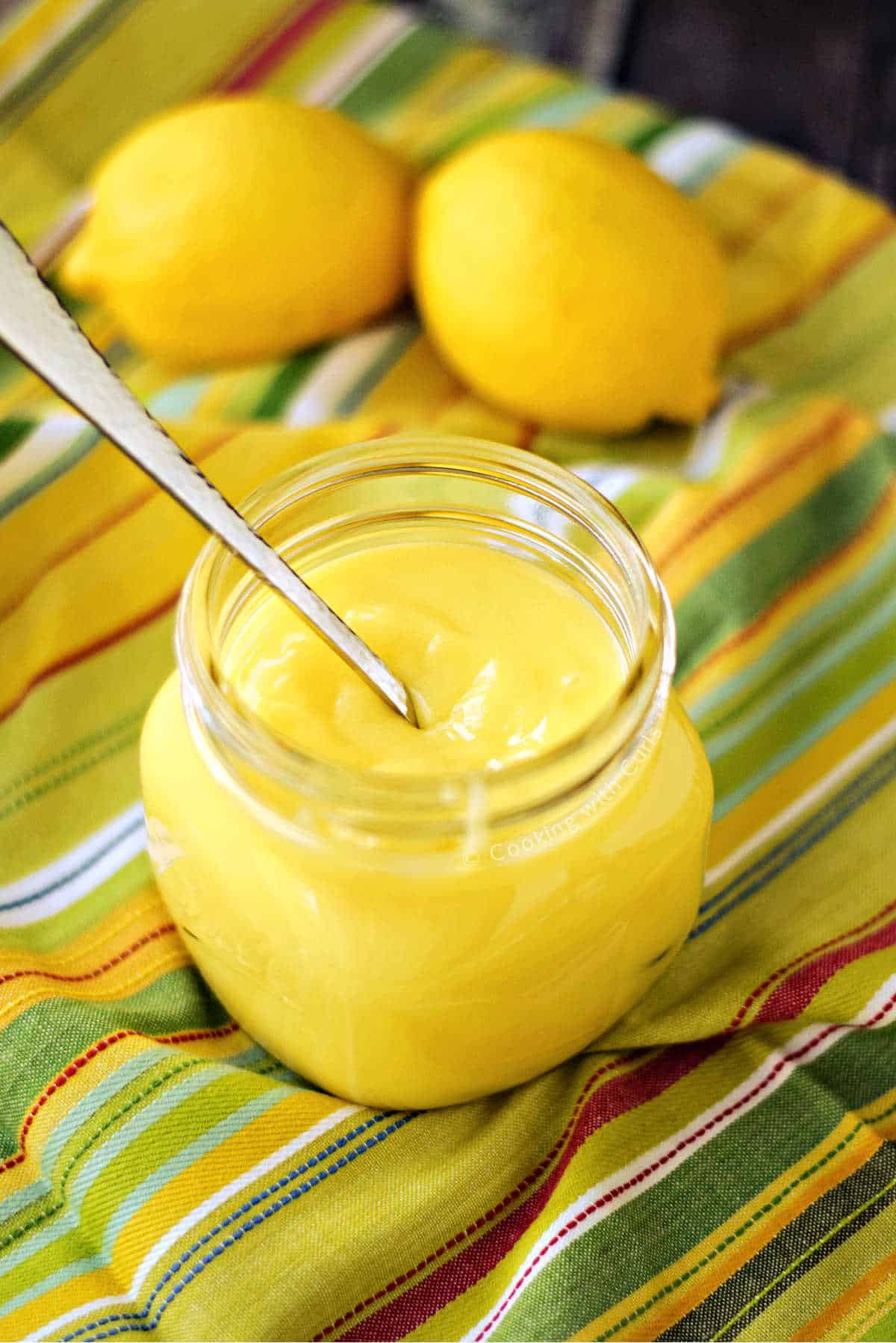
Maybe it’s the bright color of the rind, or the tart scent, but there is just something happy and uplifting about lemons. Creamy lemon curd has been a favorite of mine since I was a child.
I used to spread it over baked pie crust scraps, English muffins or French toast every chance I could. This easy lemon curd recipe tastes just like the jars we bought at the Renaissance Festivals we went to every year!
Best of all, it’s not difficult to make.

You may recognize this homemade lemon curd from my Lemon Curd Tarts that I posted over a year ago….where does the time go?
What does lemon curd taste like?
Lemon curd has a unique and delightful taste that combines the tartness of lemons with the sweetness of sugar and the richness of butter and eggs. Overall it is a harmonious blend of tangy, sweet, creamy and zesty!

Check out my Paleo Lemon Curd recipe for a sugar-free option that still maintains it’s intense tart lemon flavor.
Where does lemon curd come from?
The exact origin of lemon curd is not definitively known, but it is believed to have originated in England, where it has been enjoyed for centuries as a traditional accompaniment to scones. Lemon curd became particularly popular during the 19th century in Britain, where it was commonly served as a luxurious treat for afternoon tea.
Initially, lemon curd was made as a way to preserve lemons, much like other fruit preserves and jams. The combination of lemons, sugar, and eggs allowed for the creation of a delicious spread that could be enjoyed throughout the year, even when lemons were not in season.
Over time, it has gained popularity beyond Britain and is now enjoyed in various countries around the world. It has become a versatile ingredient in both sweet and savory dishes, adding a bright and zesty flavor to a wide range of recipes.
🍋What you’ll need
- Fresh squeezed lemon juice
- Granulated sugar
- Large whole eggs and large egg yolks
- Unsalted butter, cubed
- Sea salt
Check out the printable recipe card below for the complete recipe and detailed instructions.
How to make Lemon Curd
Bring 1-inch of water to a boil in a large pot.
Zest and juice the lemons, making sure to strain the juice to remove any seeds or pulp.
Place eggs, egg yolks, lemon juice, salt, and sugar in a large stainless steel bowl (or double boiler setup) and whisk together.
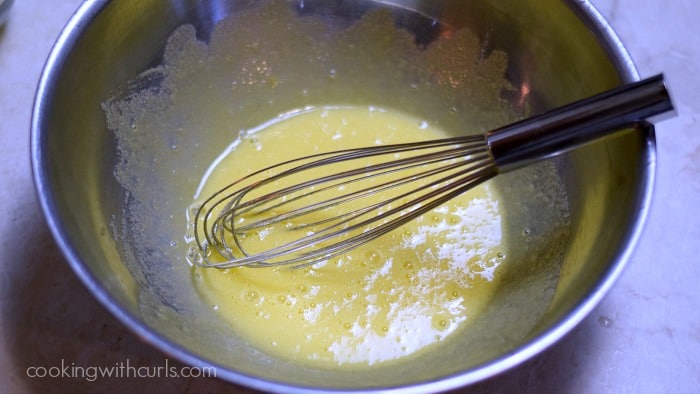
Place the bowl over a pot of simmering water, making sure the bottom of the bowl doesn’t touch the water. This indirect heat will help prevent the eggs from curdling.
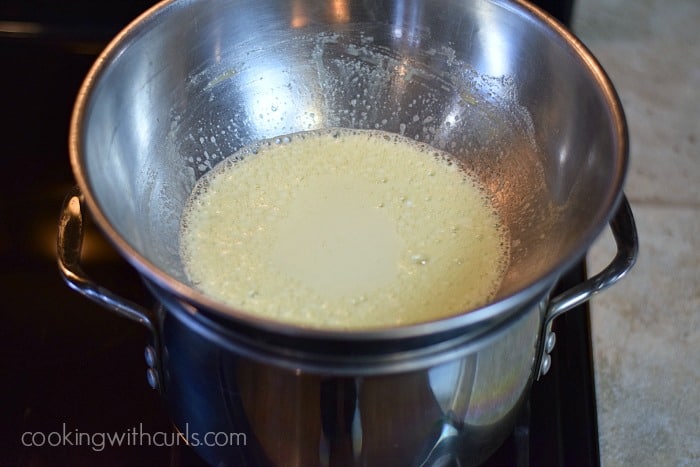
Stir occasionally until thickened.
Mixture will be ready when it coats the backside of a spoon, and leaves a tunnel when you run your finger through it. It takes about 5 to 7 minutes. It looks thicker in person.
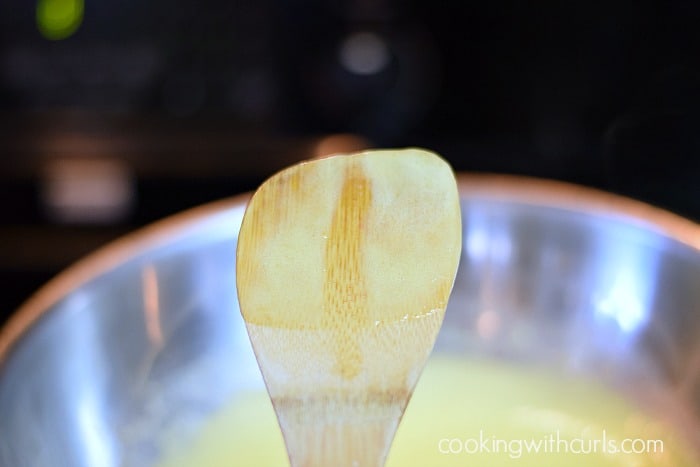
Remove from heat and add the cubed butter to the bowl. Continuously whisk the mixture until the butter melts and the mixture thickens. This process may take about 10-15 minutes. Be patient and keep whisking to prevent lumps from forming.
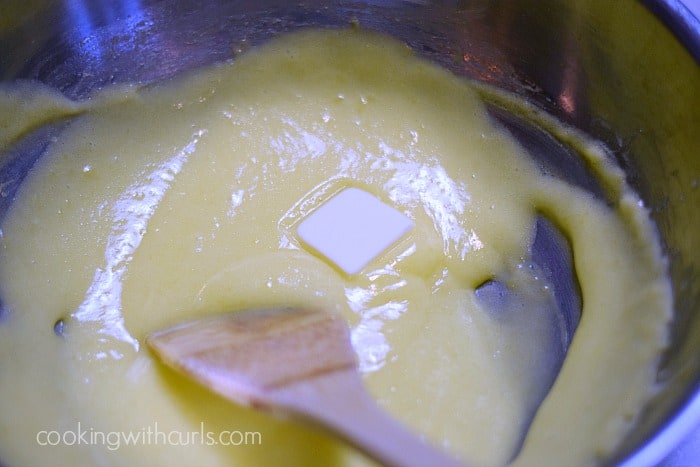
Your Homemade Lemon Curd will thicken as it cools, and turns into the most luscious treat your can imagine…okay, maybe I exaggerated just a little bit. 😉
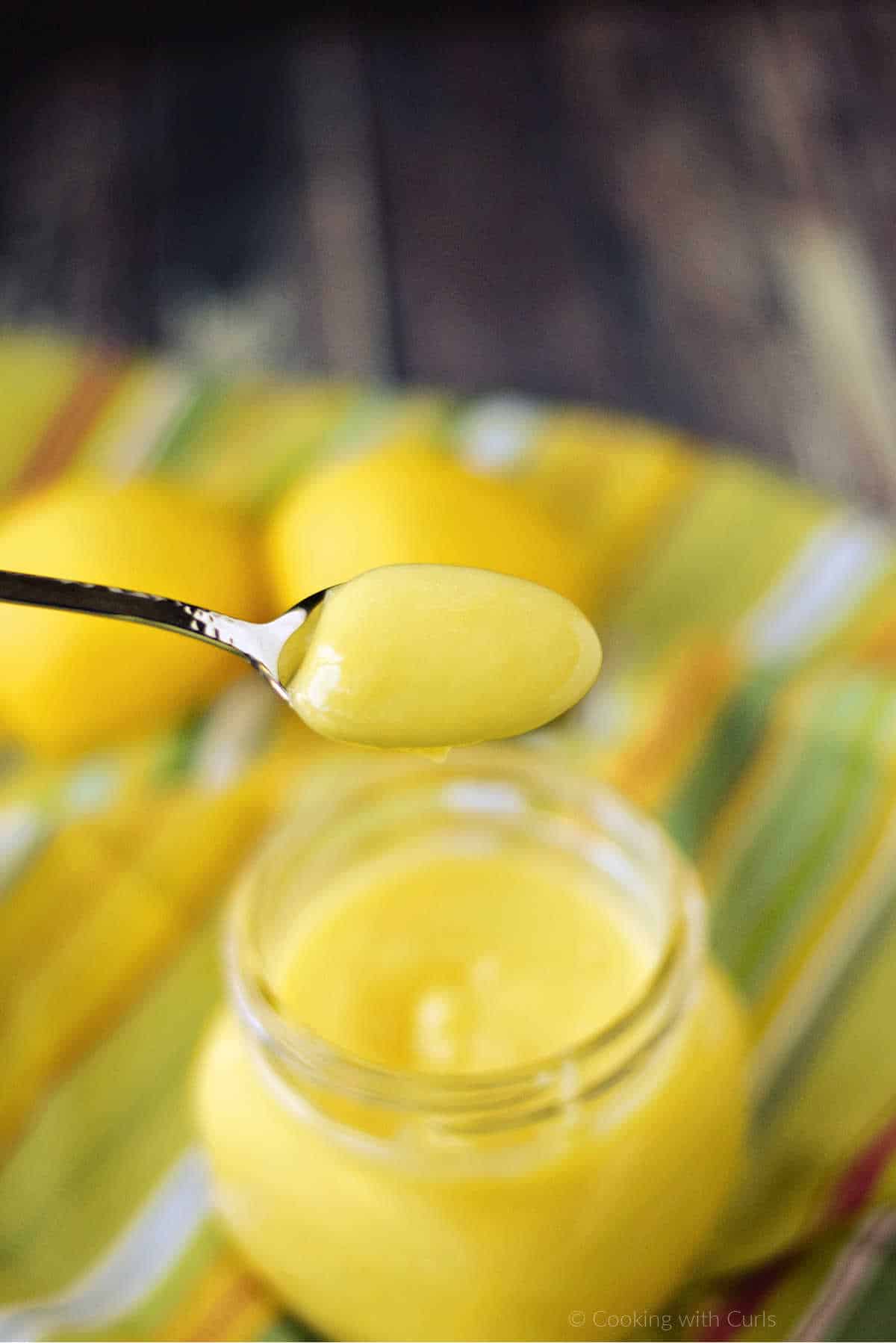
Just try not to eat the entire batch with a spoon….I dare you!
Storage
Lemon curd should be stored in the refrigerator to maintain its freshness and quality. After making it, allow the lemon curd to cool completely at room temperature, then transfer it to a clean, mason jar or airtight container. Seal the jar or container tightly and place it in the refrigerator.
Stored properly, homemade lemon curd can last for up to two weeks in the refrigerator.

Try substituting different citrus fruits to create different flavored curd recipes:
Lime Curd: Similar to lemon curd but with a more intense tanginess, lime curd is made using fresh lime juice and zest instead of lemons. It has a bright green color and a refreshing flavor that pairs well with desserts like key lime pie or as a filling for tartlets.
Orange Curd: Made with freshly squeezed orange juice and zest, orange curd has a sweeter and less acidic taste compared to lemon curd. It offers a sunny citrus flavor that works well as a spread on toast, filling for cakes, or topping for yogurt and pancakes.
Grapefruit Curd: Grapefruit curd is made using grapefruit juice and zest, resulting in a tangy and slightly bitter flavor profile. It has a beautiful pink color and adds a unique twist to desserts like pavlova, cheesecake, or meringue pies.
Meyer Lemon Curd: Meyer lemons are a sweeter and less acidic variety of lemons, with a slightly floral aroma. Meyer lemon curd is made using Meyer lemon juice and zest, resulting in a milder and more delicate flavor compared to traditional lemon curd. It’s perfect for those who prefer a less tart option.
Blood Orange Curd: Blood oranges have a distinctive crimson flesh and a sweet-tart flavor profile. Blood orange curd is made using blood orange juice and zest, resulting in a vibrant orange color and a unique citrus flavor with hints of raspberry-like sweetness.
Just remember to adjust the amount of sugar to balance the sweetness and acidity of the fruit you’re using.
🍋FAQ’s
For best results fresh lemon juice is preferred for its bright flavor, but you can use bottled lemon juice as a substitute if fresh lemons are unavailable. Just make sure it’s 100% pure lemon juice without any additives – aka the little plastic lemons in the produce section.
Lemon curd can turn lumpy if the eggs cook too quickly or if the heat is too high. To avoid this, make sure to whisk the mixture continuously while cooking over gentle heat. If lumps do form, you can strain the curd through a fine mesh sieve to remove them.
It’s best to use unsalted butter in lemon curd to control the amount of salt in the final product. If you only have salted butter on hand, you can still use it, but omit any additional salt in the recipe to avoid oversalting the curd.
The lemon curd is done cooking when it has thickened enough to coat the back of a spoon and holds its shape when you run your finger through it. It should have a smooth and creamy consistency. This typically takes about 10-15 minutes of cooking over gentle heat.
Yes, it can be frozen for longer storage. Transfer it to a freezer-safe container, leaving some room for expansion, and freeze for up to 2-3 months. Thaw it in the refrigerator overnight before using, and give it a good stir to restore its creamy texture.
If your lemon curd is too runny, it may not have been cooked long enough to thicken properly. You can try cooking it for a few more minutes over gentle heat while whisking continuously until it reaches the desired consistency. Additionally, make sure you’re using the correct ratio of ingredients as specified in the recipe.
More lemon recipes for lemon lovers
- Honey Lemon Popcorn
- Lemon Cookies
- Paleo Lemon Cheesecake
- Lemon Meringue Pie Bites
- Lemon Asparagus Pasta
- Easy Homemade Lemonade
Did you try this recipe? I’d love to see it!
Tag @cookingwithcurls on Instagram & Facebook and leave a ⭐️⭐⭐⭐⭐ review below!
Enjoy!!

Homemade Lemon Curd
Ingredients
- 0.5 cup fresh squeezed lemon juice or 100% pure jarred lemon juice
- .67 cups granulated sugar two-thirds cup
- 2 large eggs
- 2 large egg yolks discard egg whites
- 0.5 cup unsalted butter cut into cubes
- pinch sea salt
Instructions
- Bring 1 -inch of water to a boil in a large pot. Zest and juice the lemons, making sure to strain the juice to remove any seeds or pulp.
- Place eggs, egg yolks, lemon juice, salt, and sugar in a large stainless steel bowl (or double boiler setup) and whisk together.
- Place the bowl over a pot of simmering water, making sure the bottom of the bowl doesn’t touch the water. This indirect heat will help prevent the eggs from curdling. Stir occasionally until thickened.
- Mixture will be ready when it coats the backside of a spoon, and leaves a tunnel when you run your finger through it. It takes about 5 to 7 minutes. It looks thicker in person.
- Remove from heat and add the cubed butter to the bowl. Continuously whisk the mixture until the butter melts and the mixture thickens. This process may take about 10-15 minutes. Be patient and keep whisking to prevent lumps from forming. Lemon Curd thickens as it cools.
Notes
- Storage: After making, allow the lemon curd to cool completely at room temperature, then transfer it to a clean, mason jar or airtight container. Seal the jar or container tightly and place it in the refrigerator. Stored properly, homemade lemon curd can last for up to two weeks in the refrigerator.
- Lemon curd can turn lumpy if the eggs cook too quickly or if the heat is too high. To avoid this, make sure to whisk the mixture continuously while cooking over gentle heat. If lumps do form, you can strain the curd through a fine mesh sieve to remove them.
- If your lemon curd is too runny, it may not have been cooked long enough to thicken properly. You can try cooking it for a few more minutes over gentle heat while whisking continuously until it reaches the desired consistency. Additionally, make sure you’re using the correct ratio of ingredients as specified in the recipe.
- See original post for all tips and FAQ’s.

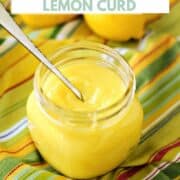
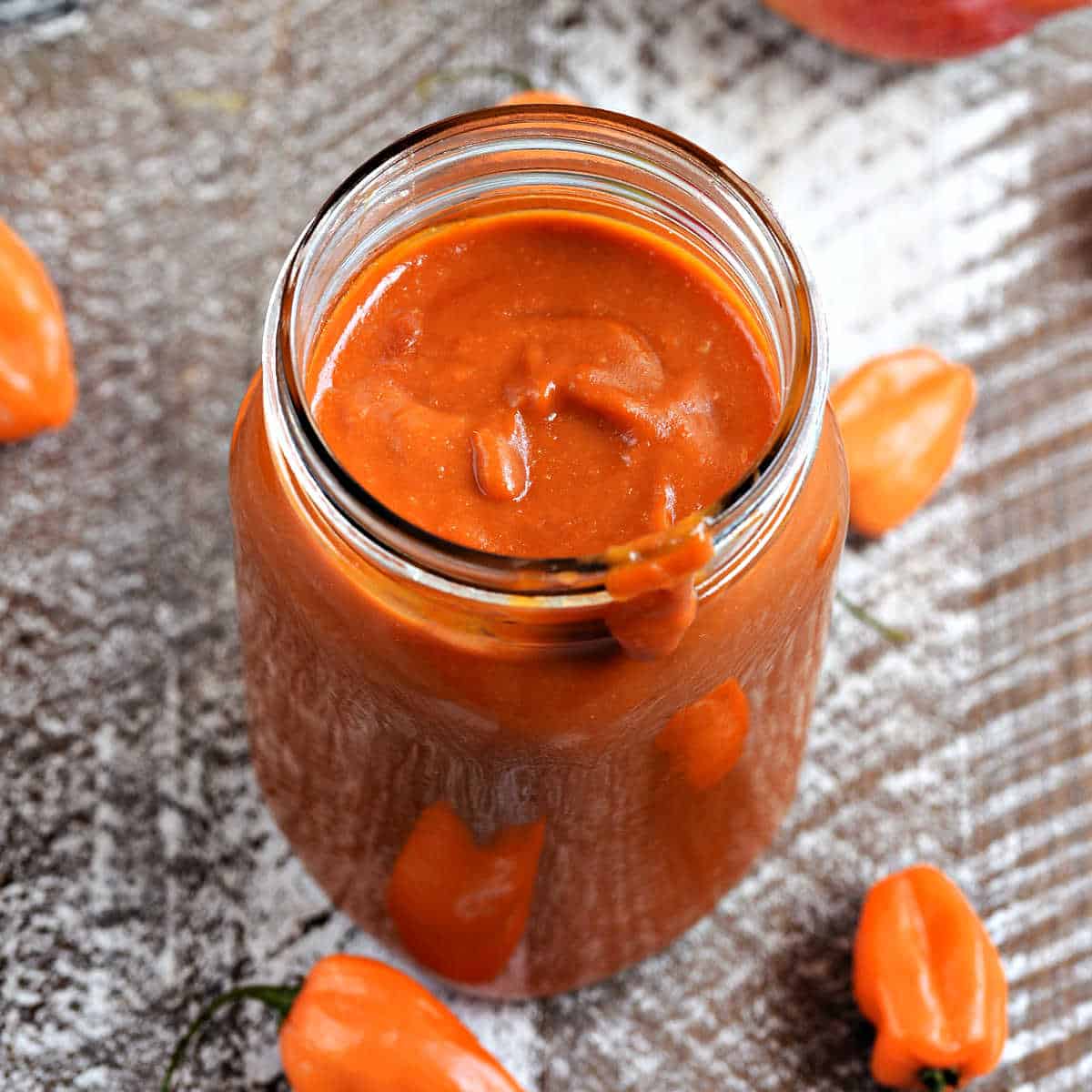

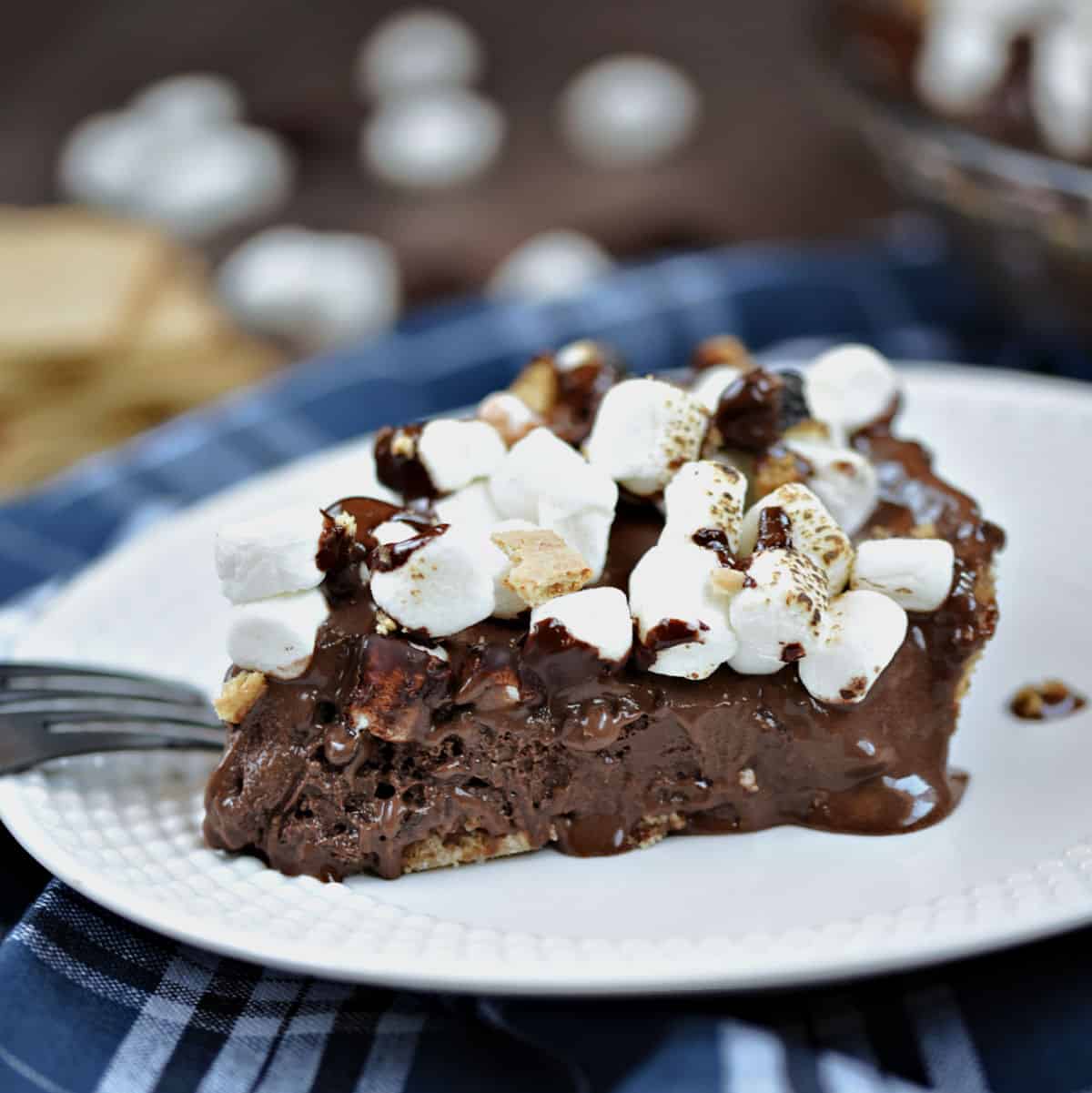
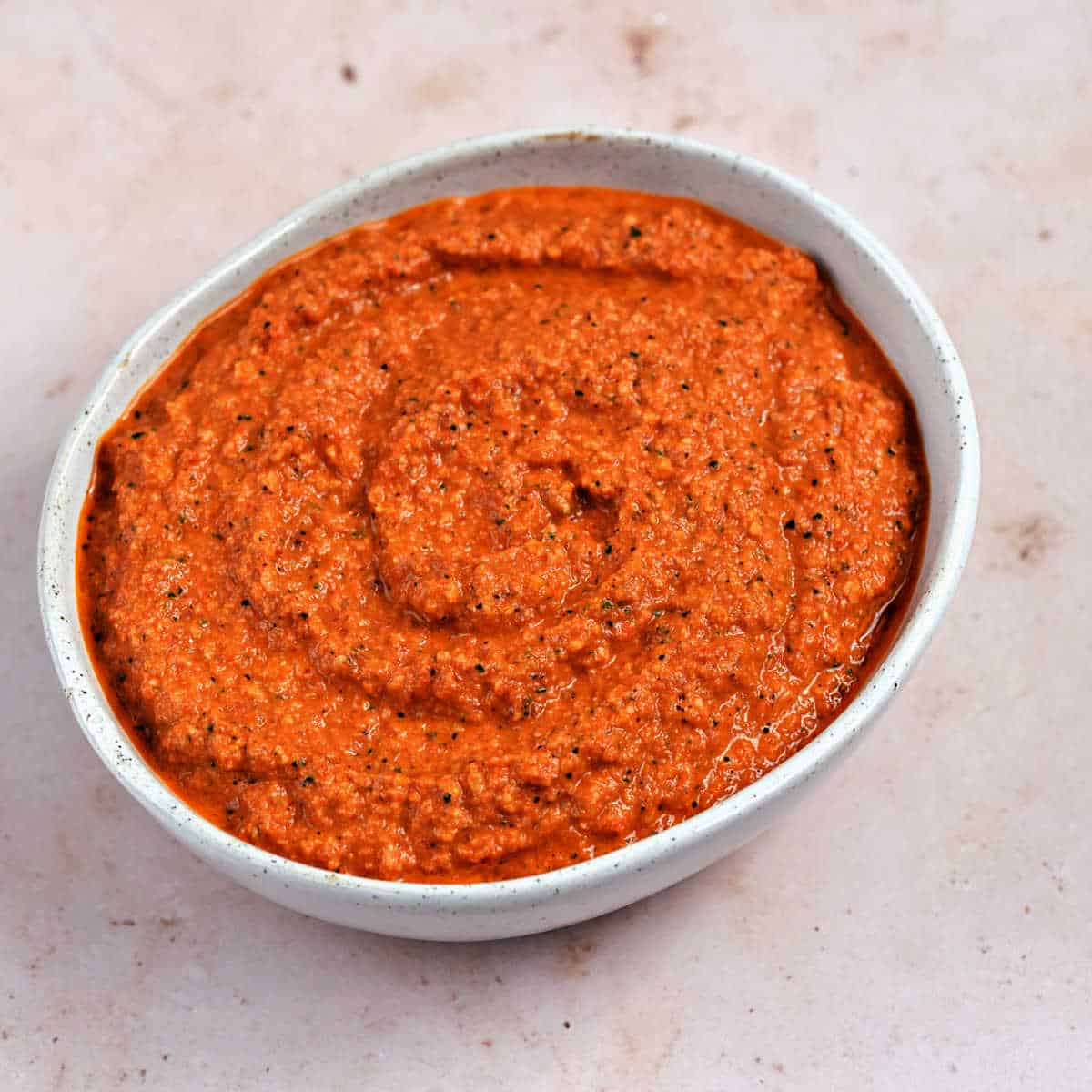
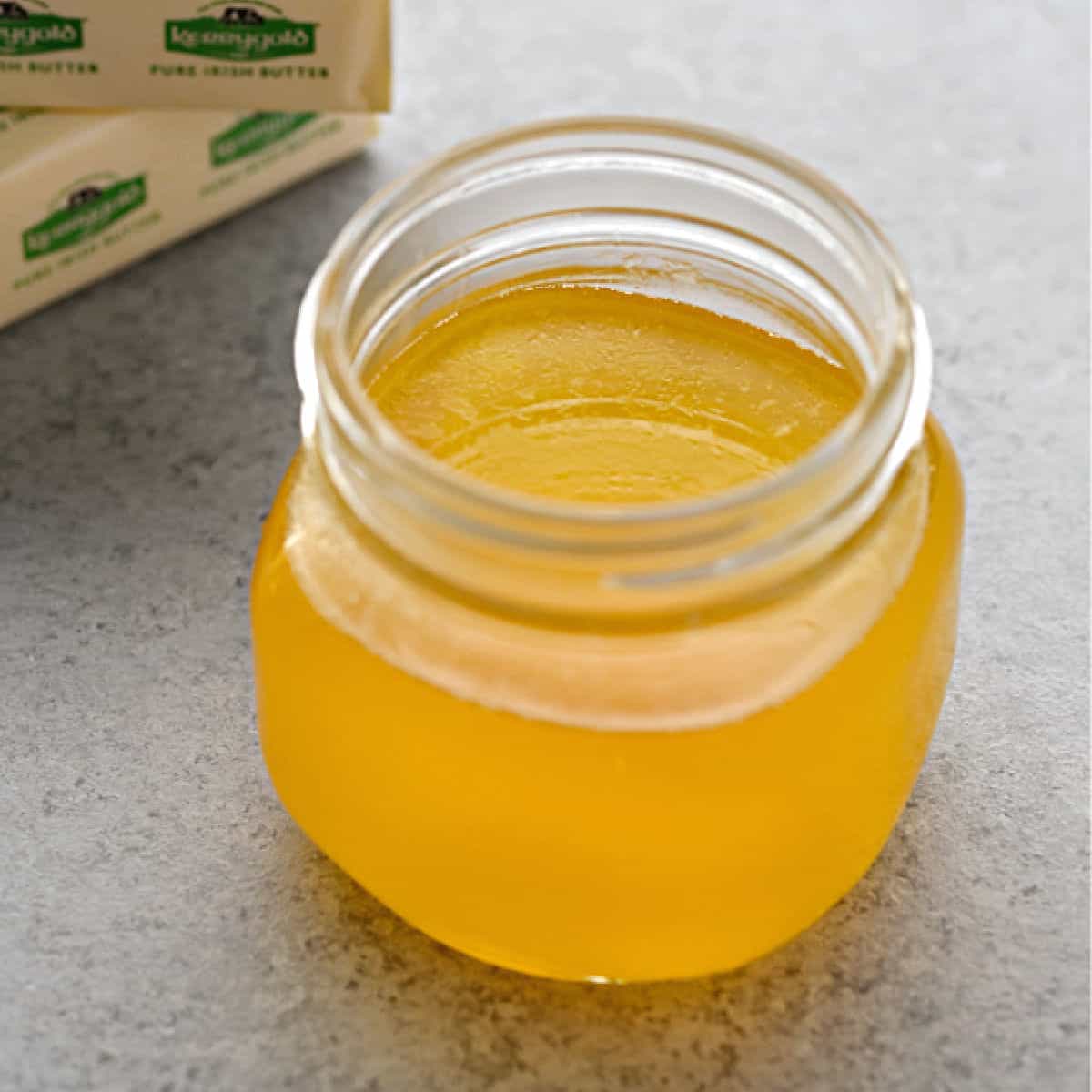

Oooh…Yum. I’m gonna have to make that curd!?
I adore lemon curd! I could eat it by the spoonful.
I LOVE lemon curd. Now I have to make a batch!! Pinned!
Oh, goodness. I love lemon curd. Seriously, LOVE lemon curd…and I can’t wait to try this recipe. Looks like I’ll have to run a lot of extra miles this spring! Thanks for the recipe!
Thanks for sharing at the Inspiration Spotlight party. Pinned & shared.
This is a great recipe! Lemon curd is so pretty! Thanks for linking up with What’s Cookin’ Wednesday!